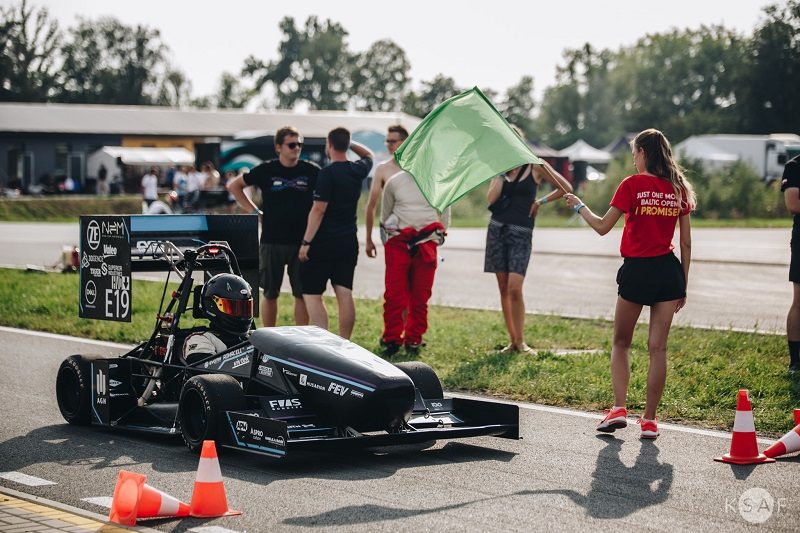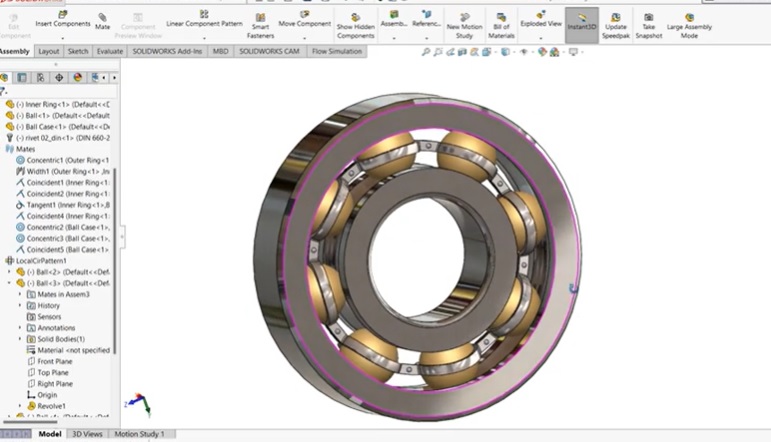KISSsoft Supports Student Racing Team in Poland
AGH Racing—Innovating and Designing Formula Student Vehicles
Powered by an electric motor.
The idea of creating the Formula Student team representing the AGH University of Science and Technology in Cracow was born in 2012 and came to life soon after. That’s how AGH Racing was established. The team didn’t wait long and started building their first car—RTC1.0. It was equipped with a 68P S internal combustion engine. The vehicle itself weighed around 380 kg. It took part in its first competitions in 2013 in Hungary and then at the famous Silverstone Circuit. In the following years, the team presented RTC2.0 and RTE3.0, but the streak of success began with RTC5.0, which lasted from 2017 to 2019. It is the most successful car with five podiums, including two wins in the Acceleration competition. The measured 0-100 km/h time was 3.99 seconds. The car weighed less than 200 kg, which with the engine power of 98 PS explained its great performance.
While running RTC5.0, the team decided to try their hand with an electric powertrain, which is still gaining popularity. In 2018, the RTE1.0 was presented, which was mainly a testing ground for the successor. Thanks to RTE2.0 they became the first team in Poland to successfully pass the technical inspection for the Formula Student Electric Vehicle class. The second EV still holds the title of the lightest car in the team’s history, with a curb weight of 190 kilograms, allowing it to accelerate from 0 to 100 km/h in 3.5 seconds, half a second faster compared to RTC5.0.
 Powered by a combustion engine.
Powered by a combustion engine. The outbreak of the pandemic, although it significantly changed the plans, did not stop the students from further work. In 2021, the RTC7.0 was presented—the last combustion car, which they still race today. For the first time in the team’s history, they based the chassis on a composite half-monocoque. This provided an unprecedented level of stiffness and steering precision. The RTC7.0 power unit is based on the Honda CBR 600RR 0.6-liter inline-four engine. After some modifications, this engine can generate 100 PS. With a curb weight of 195 kilograms, it is their fastest car ever, and its sprint to 100 km/h takes just over three seconds. This resulted in third place in the Acceleration category in Formula Student Spain 2021.
The team started the latest season in 2022 with a great showcase—AGH Racing was the first team in Poland to present an autonomous car designed for the Formula Student competition. The RTD1.0 was created based on the RTE2.0, which was modernized with an autonomous module. The premiere of the construction in March gave them a lot of time to demonstrate it to the world before the competition.
Last year’s season can be considered a very successful one. During the Formula Student Czech Republic, the team won the static event—Business Plan Presentation. After four competitions, during which they fought with failures and bad luck, at the end of the season, during the Formula Student Spain competition, they successfully passed scrutineering for a Driverless Vehicle class car, and then they entered dynamic competitions with it. It was the first team in Poland to do so, which once again put this team in the position of national pioneers.
The team came back from the competition with a new dose of energy and motivation for the next season. They are already working on the new design and introducing innovative elements to it. Many of these solutions are created with the help of KISSsoft.
 Monitoring and analyzing telemetry.
Monitoring and analyzing telemetry.
KISSsoft helped the students develop steering column gears in the RTC7.0 race car powered by an internal combustion engine. Then they used the software to develop a gearbox for their new electric AWD drivetrain in the upcoming RTE3.0 car. Most importantly, they could optimize the micro geometry of the gears and analyze the influence of different factors on the durability of the gear tooth. KISSsoft made it easier to apply quick changes in the project, as it adapts other tooth geometry to the ones they were working on. This helped speed up the process and avoid errors. It was a big step forward compared to the previous software.
From the beginning of 2012, AGH Racing has grown significantly. In the debut season, it had only 18 people, and currently, the team consists of 2 scientific clubs that associate well over 100 students.
Related Articles
-
December 11, 2024
-
Power Density Progress
December 2, 2024 -
CCTY Tackles Humanoid and Industrial Robot Development
September 13, 2024
-
The Future of Power Manufacturing, Warehousing, and Logistics
October 28, 2024 -
5 Ways to Save Money Through Ultrasonic Analysis
December 11, 2024
-
The Future of Power Manufacturing, Warehousing, and Logistics
October 28, 2024 -
5 Ways to Save Money Through Ultrasonic Analysis
December 11, 2024 -
Operational Improvements
December 11, 2024






